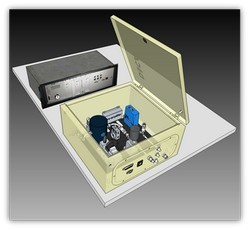New technology for oil-free compressed air
When compressed to a smaller volume, air attains higher-than-atmospheric pressure that makes it useful in many industrial and domestic applications. Compressed air generates force per unit area that can be used to impart motion in pneumatic tools. It can also atomise or spray substances such as automotive coatings, provide aeration for oxidation in pharmaceutical processes or clean electronics during production. Compressed air is extensively used in the health sector. These and other high-end applications require very-high-purity compressed air. Oil contamination is a pressing problem and there is currently a lack of any reliable, highly sensitive online sensor system to deal with it. EU-funded scientists provided the much-needed solution with a new real-time sensor system through the project DOCA(opens in new window) (Detection of oil in compressed air (DOCA)). Investigators chose optical spectroscopy as the sensor technology. This is the most promising technology to guarantee extremely high sensitivity (meeting ISO-8573 Class I standards of air quality), repeatability, robustness to interference and stable calibration. The sensor platform consists of three units: the sampling system, the optical spectroscopy unit, and the electronics and software. In particular, the newly developed sensor system is capable of detecting contaminant concentrations of less than 1 ppb in all lubricants or mixed oils. The connection of the sensor to the compressed air system is achieved by a patented quick lock system. The DOCA technology for online and real-time identification of oil contamination in compressed air will have major impact on both the costs, effectiveness of monitoring and quality assurance. A recently started follow-up Eurostars project titled Pasoca will take the developed prototype sensor to a certified commercial product.







